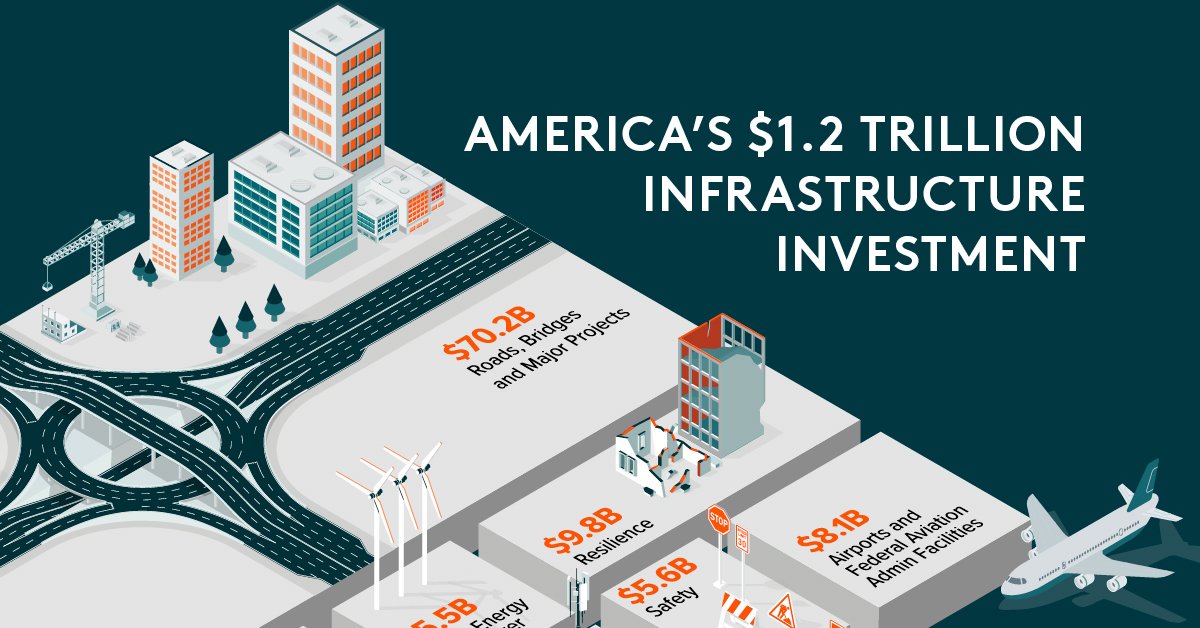Part Two: Breaking Down the 117th Congress’s $1.2T Infrastructure Investment
The 117th Congress has passed several acts, including the CHIPS Act, the Bipartisan Infrastructure Law, and the Inflation Reduction Act. These will provide the U.S. with an infrastructure investment of over $1.2 trillion between 2021 and 2030. The goal is to modernize the nation’s declining infrastructure and complete repairs to many significant projects.
In part two of the Rejuvenating U.S. Infrastructure series, we partnered with Global X ETFs to investigate how this incredible allocation has been used so far.
U.S. Investment in Infrastructure, 2021-2023
| Investment Area | Total Invested (2021-2023) |
|---|---|
| Roads, Bridges, and Major Projects | $70.2B |
| Resilience | $9.8B |
| Airports and Federal Aviation Administration Facilities | $8.1B |
| Safety | $5.6B |
| Clean Energy and Power | $5.5B |
| Ports and Waterways | $4.1B |
| Water | $3.7B |
| Broadband | $3.5B |
| Public Transportation | $3.5B |
| Clean Energy | $1.9B |
| Environmental Remediation | $1.6B |
| Climate Resilience | $1.0B |
| Electric Vehicles, Buses, and Ferries | $1.0B |
| Other | $0.5B |
| Clean Buildings and Homes | $0.4B |
| Parks and Conservation | $0.3B |
| Clean Transportation | $0.2B |
As you can see, over two-thirds of the total allocation has gone to roads, bridges, and other major infrastructure projects, such as creating new tunnels.
However, it’s important to note that each state’s investment level varies dramatically.
For instance, 76% of Wyoming’s current investment was in climate or environmental initiatives such as Project Bison, the world’s most extensive carbon capture program. Project Bison could remove up to 5 million metric tons of CO2 by 2030.
Investment in Major Infrastructure Projects, 2021-2023
So far, much of Congress’s investment in the nation’s backbone has been strategically weighted toward a few significant and much-needed major projects. These include bridge repairs, maintenance of major water works, and power restoration and improvements.
| Rank | Project Name | Total Invested |
|---|---|---|
| 1 | Brent Spence Bridge Restoration, Ohio | $1.39B |
| 2 | Reactor Demonstration Program in Kemmerer, Wyoming | $1.32B |
| 3 | Diablo Canyon Power Plant Improvement | $1.1B |
| 4 | South Florida Ecosystem Restoration | $1.1B |
| 5 | Funding the Montana Water Rights Protection Act | $1.0B |
| 6 | Complete Construction Work on Montgomery Lock and Dam, Pennsylvania | $0.9B |
| 7 | Ecosystem Restoration in the Upper Mississippi River | $0.73B |
| 8 | Replacement Lock at Sault Ste Marie, Michigan | $0.48B |
| 9 | Complete Kentucky Lock and Dam, Tennessee River | $0.47B |
| 10 | Fargo-Moorhead Metropolitan Flood Risk Management Project | $0.44B |
Yielding Positive Results
Between 2021 and 2023, the 117th Congress invested more than $120 billion in U.S. infrastructure.
Although the nation has vowed to spend a further trillion dollars on its infrastructure, it is already seeing a return on its investment by creating tens of millions of new jobs and stimulating billions of dollars in private investment.
In part one, we discussed why the U.S. needed to invest in infrastructure. In the third and final part of the Rejuvenating U.S. Infrastructure series, we explore how the U.S. plans to use its investment as an opportunity to accelerate the transition to clean energy.

Click here to learn more about the Global X U.S. Infrastructure Development ETF.
-
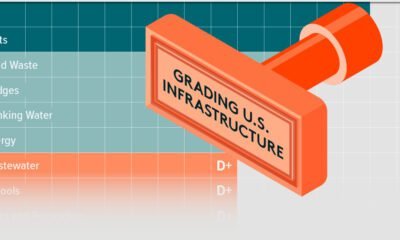
 Economy7 hours ago
Economy7 hours agoReport Card: Grading U.S. Infrastructure
This graphic shows U.S infrastructure grades and highlights the general low grade.
-
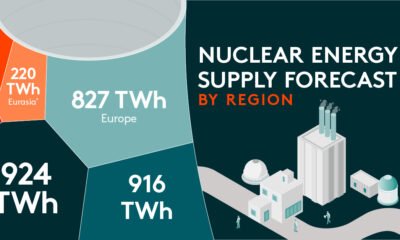
 Energy5 months ago
Energy5 months agoNuclear Energy Supply Forecast by Region
Visual Capitalist and Global X partnered to explore global nuclear energy demand, and how it’s changing, in the coming years.
-
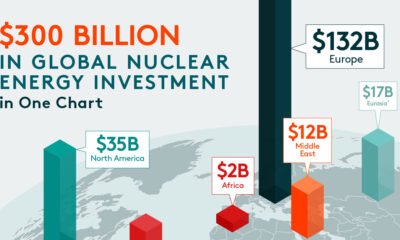
 Energy5 months ago
Energy5 months agoCharted: $300 Billion in Global Nuclear Energy Investment
Visual Capitalist and Global X partnered to explore nuclear energy investment and find out which regions spent the most on nuclear power.
-

 Energy5 months ago
Energy5 months agoVisualized: Nuclear Energy Generation by Region
Visual Capitalist and Global X ETFs explore regional nuclear energy generation and why nuclear energy is critical to the energy transition.
-
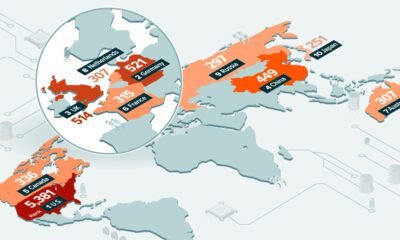
 Technology7 months ago
Technology7 months agoRanked: Which Countries Have the Most Data Centers?
For this graphic, Visual Capitalist partnered with Global X ETFs to rank the nations by the number of data centers they currently operate.
-

 Technology7 months ago
Technology7 months agoCharted: How Much Data is Stored Online?
For this graphic, Visual Capitalist has partnered with Global X ETFs to explore online data generation and show how much data could be generated between 2015…
-

 Technology7 months ago
Technology7 months agoVisualized: The Impact of AI on Revenue
In this graphic, Visual Capitalist has partnered with Global X ETFs to explore the financial impact of AI adoption across various industries.
-
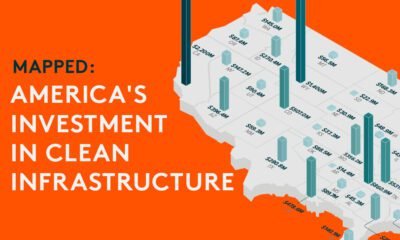
 Green1 year ago
Green1 year agoMapped: U.S. Investment in Sustainable Infrastructure (2021-2023)
This graphic shows high levels of investment in U.S. clean infrastructure between 2021 and 2023.
-

 Technology2 years ago
Technology2 years agoVisualized: What is the Artificial Intelligence of Things?
Explore the explosive growth of the Artificial Intelligence of Things (AIoT) industry and its transformative impact across sectors.
-

 Technology2 years ago
Technology2 years agoA Visual Guide to AI Adoption, by Industry
AI adoption impacts many industries, with finance leading. Discover how AI tools optimize operations, mitigate risks, and drive growth.
-
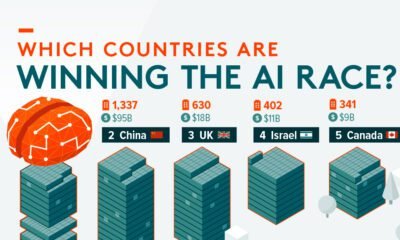
 Technology2 years ago
Technology2 years agoRanked: Artificial Intelligence Startups, by Country
Find out which countries are winning the race when it comes to the number of AI startups and private investment .
-

 Technology2 years ago
Technology2 years agoOn the Road to Electric Vehicles
Electric vehicles are playing a key role in the decarbonization of road transport. But how much further do we need to go to hit net zero?
-

 Mining3 years ago
Mining3 years agoShould You Invest in Disruptive Materials?
Disruptive materials are experiencing a demand supercycle. See how these materials are helping revolutionize next generation technologies.
-

 Technology3 years ago
Technology3 years agoThematic Investing: 3 Key Trends in Cybersecurity
Cyberattacks are becoming more frequent and sophisticated. Here’s what investors need to know about the future of cybersecurity.
